Moon in the lens
• Moon in the lens
Our moon - familiar to us the object studied is much better than, for example, the bottom of our oceans. Also, this is the only astronomical object beyond Earth where people visited.
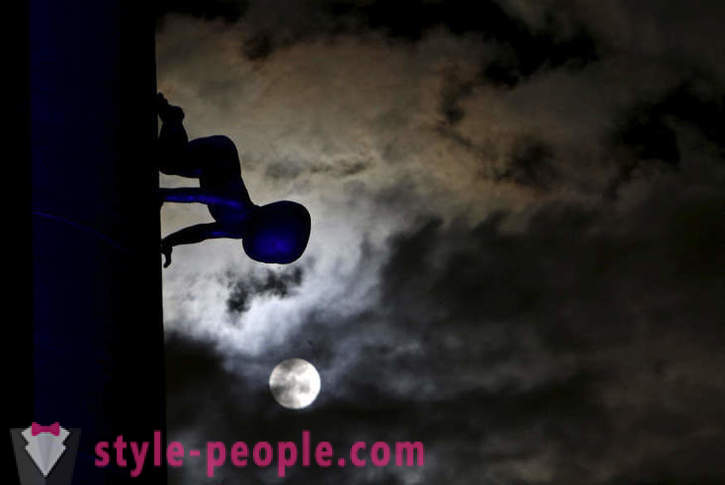
Since ancient times people have tried to describe and explain the motion of the moon. Over time, there were more and more accurate theory. The basis of calculation is the modern theory of Brown. Built around the turn of the XIX-XX centuries, it describes the motion of the moon with an accuracy of measuring instruments of the time. In this case, the calculation used by more than 1,400 members (coefficients and arguments for trigonometric functions).
1. Supermoon in Glastonbury, England. (Photo by Matt Cardy):
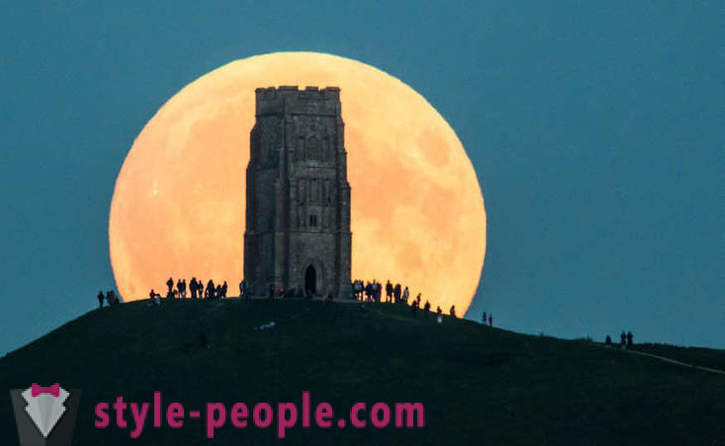
The modern science can calculate the movement of the moon and check these calculations with greater accuracy. The methods of the laser ranging of the Moon distance is measured with an error of a few centimeters.
2. Moon and airplane. Malaga, Spain. (Photo by Jon Nazca | Reuters):

The actual motion of the Moon is quite complex, with its calculation must take into account many factors, such as flattening of the Earth and the strong influence of the Sun, which attracts the Moon 2, 2 times stronger than the Earth.
3. Los Angeles, California. (Photo by Mario Anzuoni | Reuters):
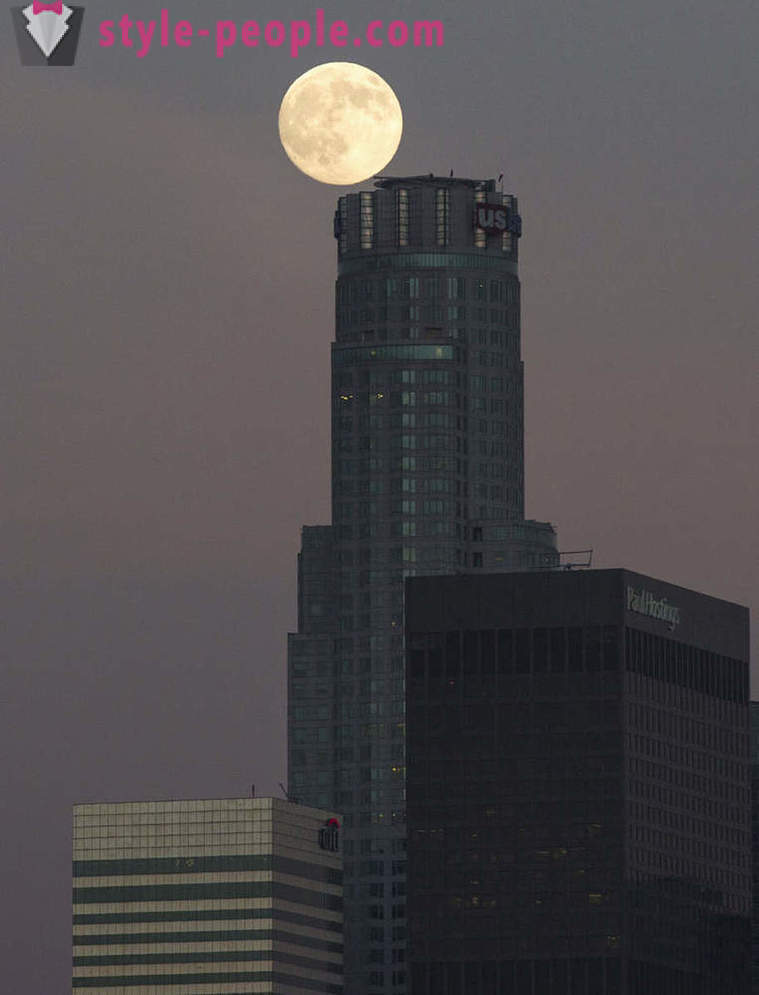
On the Moon, there is almost no atmosphere. Because of this, the sky is always black on the moon, with the stars, even when the sun is above the horizon.
4. The moon and the balloon, California. (Photo by Mike Blake | Reuters):
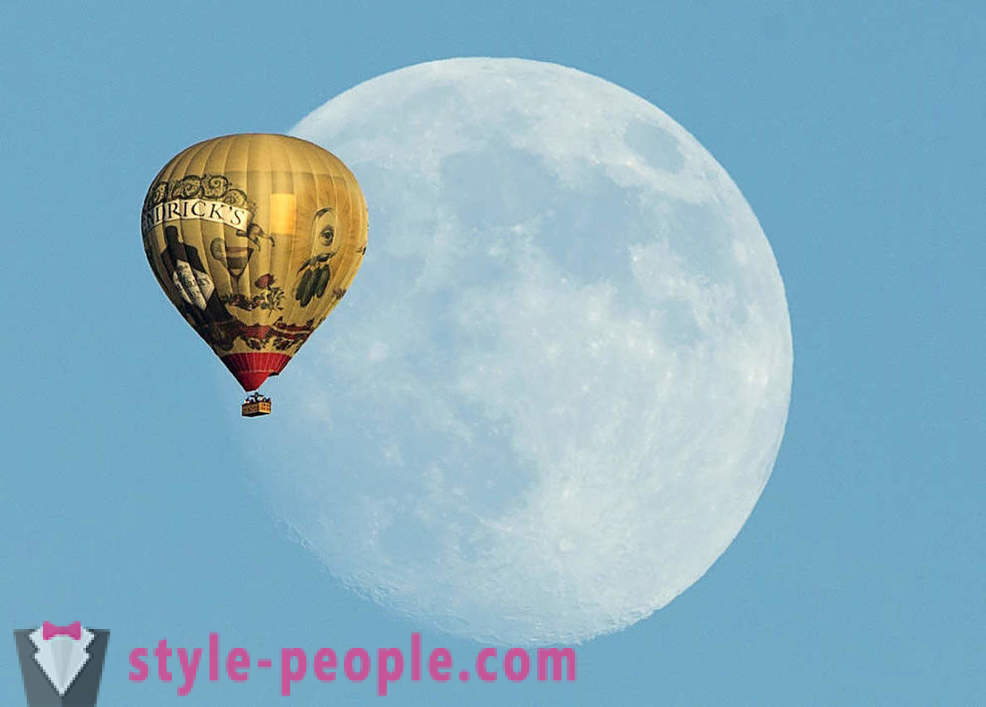
The gravitational influence of the moon on the Earth causes some interesting effects. The most famous of them - the tides. Strong tides are more prone to the eastern coast of the continent. The maximum amplitude of the tidal wave in the world is observed in the Bay of Fundy in Canada and is 18 meters. 5. Supermoon in the south of England. (Photo by Toby Melville | Reuters):
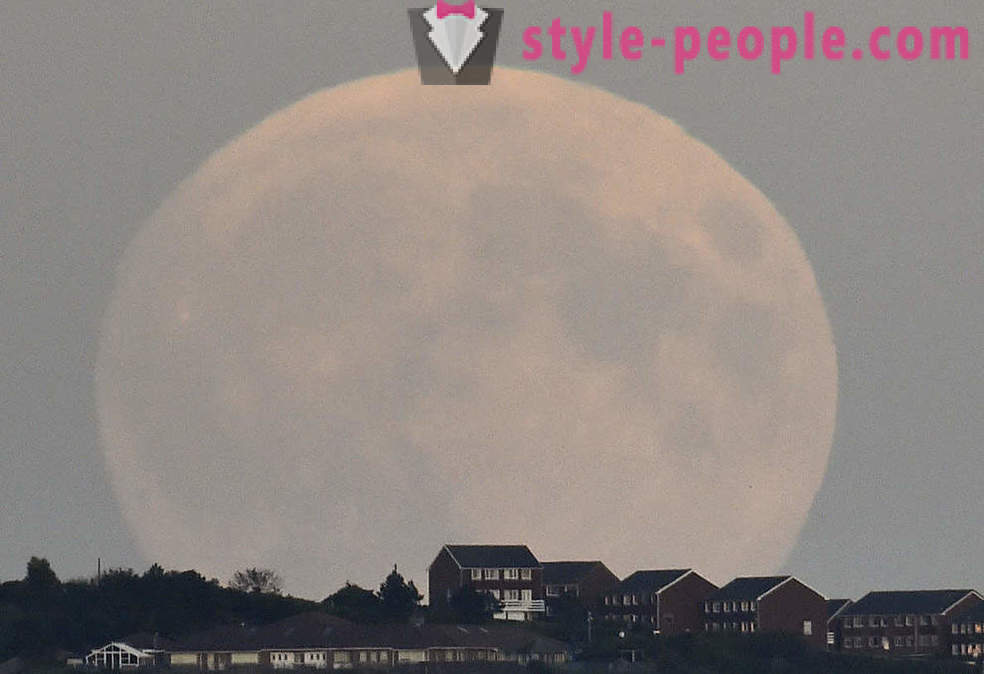
Although the globe value the sun's gravitational force is almost 200 times greater than the force of gravity of the Moon, the tidal forces generated by the moon, almost twice as much generated by the sun. This is due to the fact that the tidal forces depend not only on the magnitude of the gravitational field, and another, and on the degree of heterogeneity. When the distance from the field source inhomogeneity decreases more rapidly than the value of the field itself. Since the Sun is about 400 times farther from Earth than the Moon, the tidal forces caused by the solar attraction, are weaker.
6. Supermoon, Illinois. (Photo by Jim Young | Reuters):

One hypothesis for the origin of the Moon says, about 4, 5 billion years ago there was a collision of the Earth with cosmic body the size of Mars "knocked out" of the Earth a huge piece of molten matter, which later turned into the moon. Earth from impact received sharp increase in rotation speed (one revolution for 5 hours) and appreciable axial tilt.
7. A lunar eclipse in Warsaw, Poland. (Photo Kacper Pempel | Reuters):
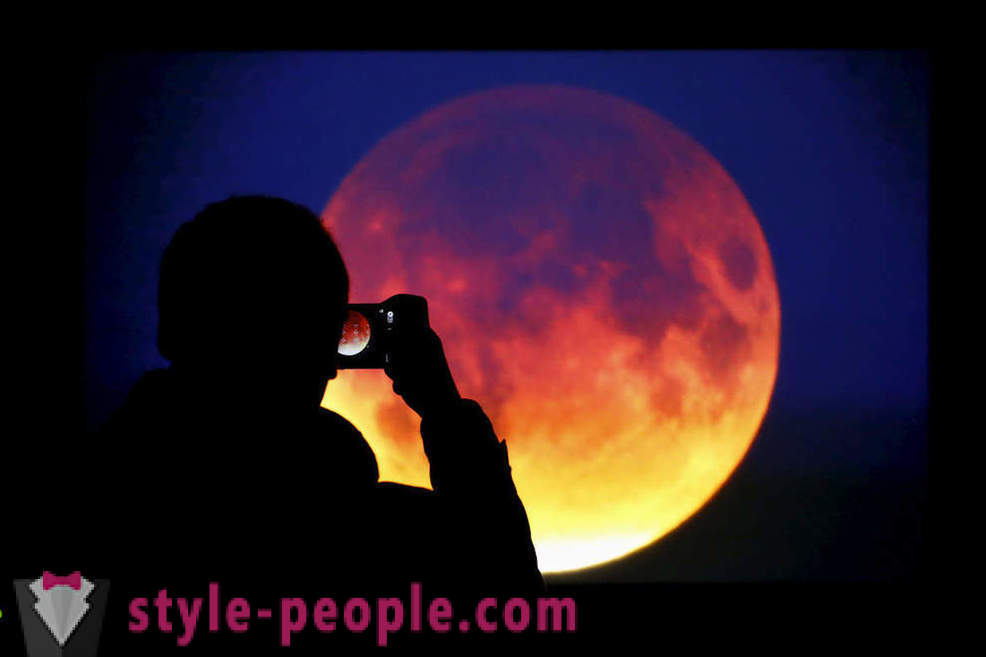
8. The bridge Alexandre III in Paris, and the Moon. (Photo by Philippe Wojazer | Reuters):

Due to its size and composition, the Moon is sometimes referred to as terrestrial planets along with Mercury, Venus, Earth and Mars. By studying the geological structure of the Moon, we can learn a lot about the structure and evolution of the Earth.
9. The lunar eclipse in Switzerland. (Photo: Arnd Wiegmann | Reuters):
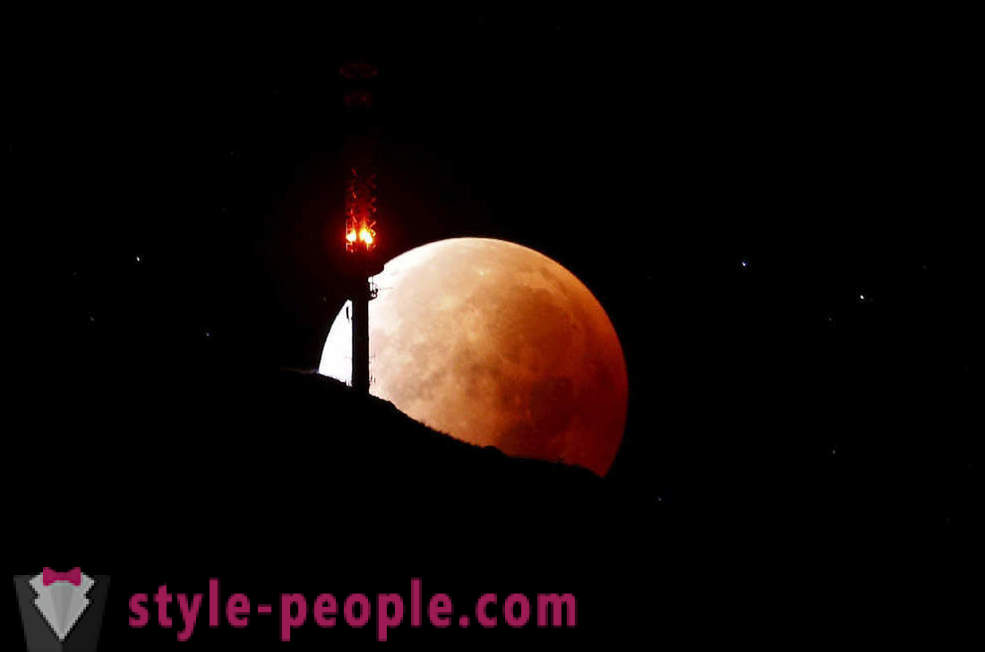
For the first time information about water is detected on the Moon was published in 1978 by Soviet scientists in the journal "Geochemistry". The fact has been established by the analysis of samples brought probe "Luna 24" in 1976. The percentage of water found in the sample was 0, 1. 10. Full Moon in Sweden. (Photo: Johan Nilsson | Reuters):
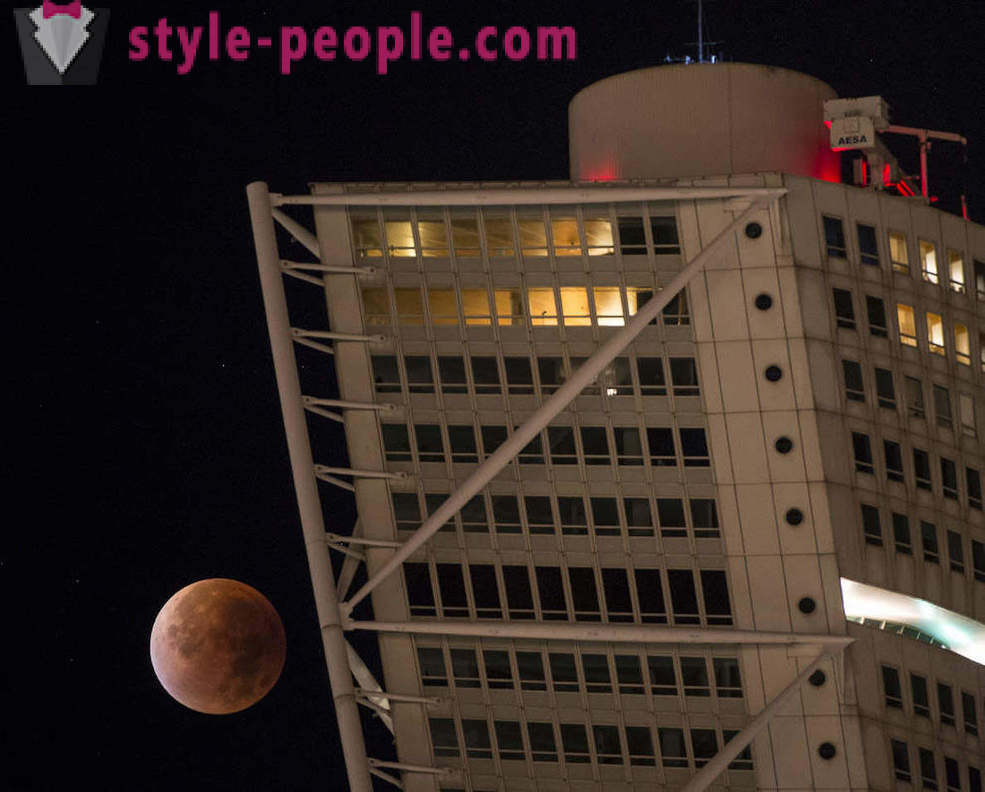
All the water has been detected in more than 40 craters with a diameter ranging from 2 to 15 km. Now scientists have no doubt that found ice - this is water ice
11. Surfer and Moon, Sydney, Australia. (Photo by David Gray | Reuters):

The surface of the Moon can be divided into two types: mountainous terrain is very old (lunar Mainland) and the relatively smooth and younger maria. Maria, which constitute about 16% of the lunar surface, - a huge craters resulting from collisions with celestial bodies, which were later flooded liquid lava.
12. Full Moon in Madrid, Spain. (Photo by Paul Hanna | Reuters):
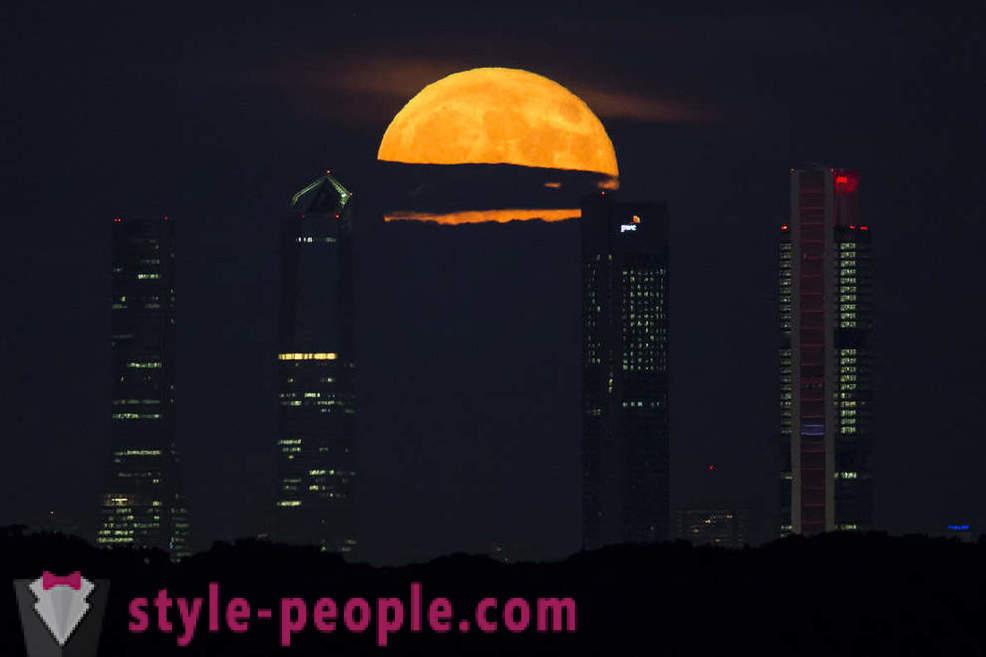
Most of the craters on the near side converts named for famous people in the history of science such as Tycho, Copernicus and Ptolemy. Details of relief on the back side have more modern names such as Apollo, Gagarin and Korolev ...
13. Full Moon in St. Petersburg, Russia. (Photo by Dmitry Lovetsky):
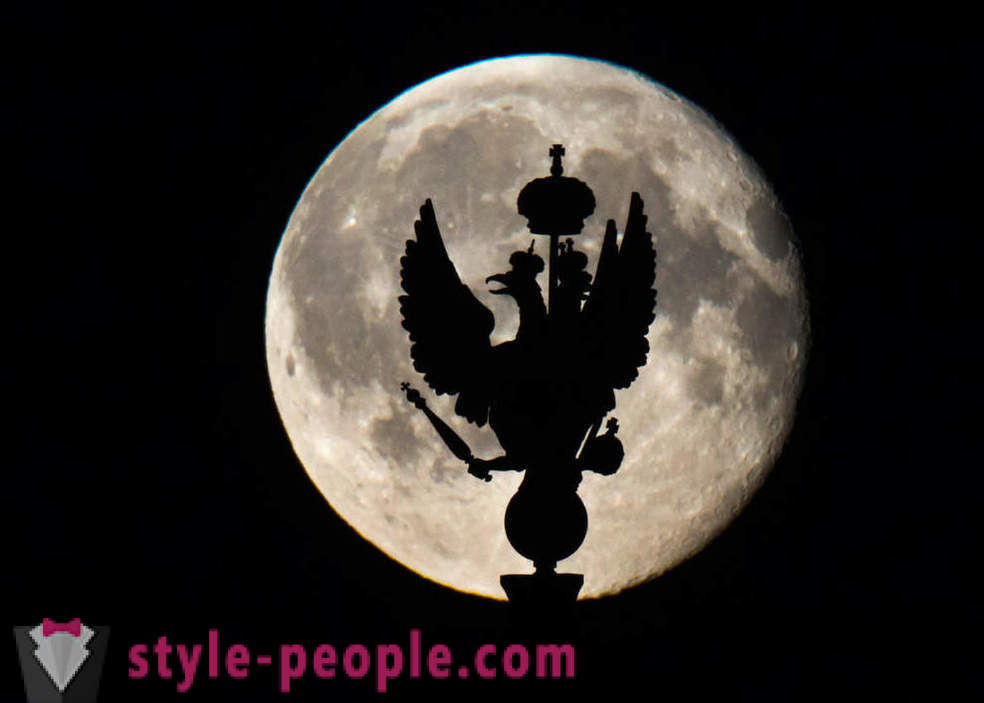
and the reverse side of the moon is a huge basin (pool) diameter of 2250 km and a depth of 12 km - the largest pool in the solar system, which appeared as a result of the collision.
14. The Moon in Brussels, Belgium. (Photo by Yves Herman | Reuters):

Due to a collision with an asteroid moon, we can observe from Earth meteorite craters on the Moon. Scientists from the Paris Institute of Physics of the Earth believe that 3.9 billion years ago the moon collision with a large asteroid caused the moon to turn. 16. Supermoon in the Canary Islands, Spain. (Photo by Carlos De Saa):
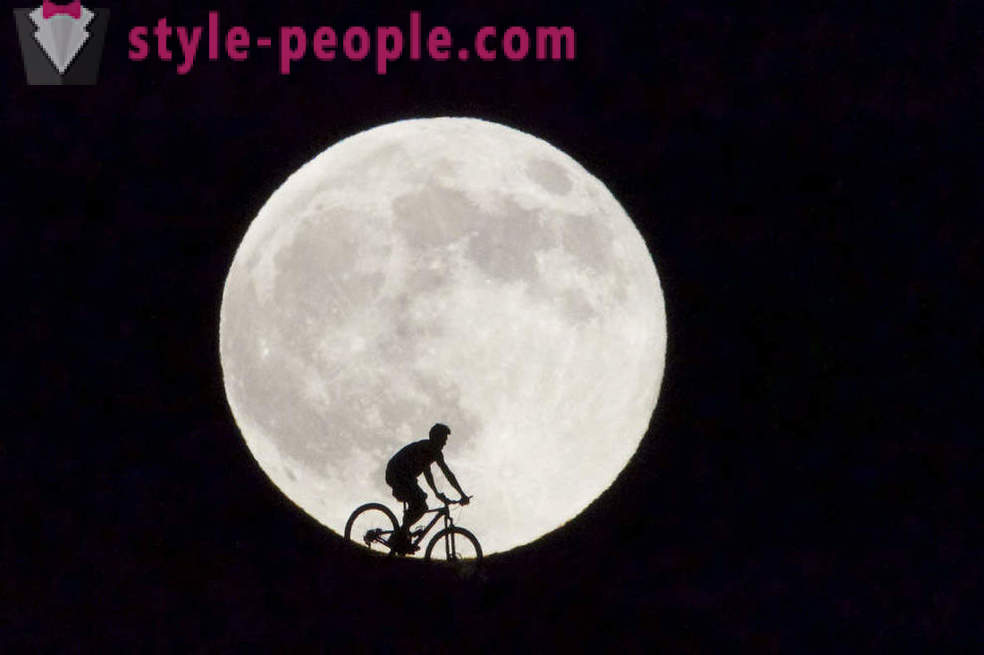
maria cover about 40% of the visible area of the Moon.
17. The Moon in Rome, Italy. (Photo by Alessandro Di Meo):

The lunar landscape is peculiar and unique. The moon is covered with craters of various sizes - from microscopic to hundreds of kilometers. For a long time scientists could not see the back side of the moon, it has become possible with the advent of satellites. Now scientists have created a very detailed maps of both hemispheres of the Moon. Detailed lunar maps up to in the near future to prepare for a human landing on the moon
18. The Moon in Hamburg, Germany. (Photo by Daniel Reinhardt):

The moon attracted the attention of people since ancient times. One of the first lunar maps made by Giovanni Riccioli in 1651, he gave the names of large dark areas, called them "seas", which we still use today. Since the beginning of the space age number of our knowledge about the moon rose significantly.
19. Supermoon in Minsk, Belarus. (Photo by Sergei Grits):

Russian scientists have identified 14 of the most probable points lunar landing. Each of seating positions has dimensions of 30 x 60 km. Future lunar base are at the experimental stage, in particular, has conducted the first successful tests samozalatyvaniya spacecraft in case of contact with these meteorites.
20. Supermoon over skyscrapers in Sao Paulo, Brazil. (Photo by Andre Penner):

In ancient India, the moon was called the lord of the planets. And according to Vedic tradition of the time the moon was more than the sun. 21. Supermoon in Lisbon. (Photo by Armando Franca):

The illusion of the moon - an optical illusion, which consists in the fact that when the moon is near the horizon, it seems to be much more than when it is high in the sky. In fact, the angular size of the Moon virtually unchanged, with its height above the horizon. Currently, there are several theories that explain this error of visual perception by different reasons.
22. (Photo: Fabrizio Bensch | Reuters):
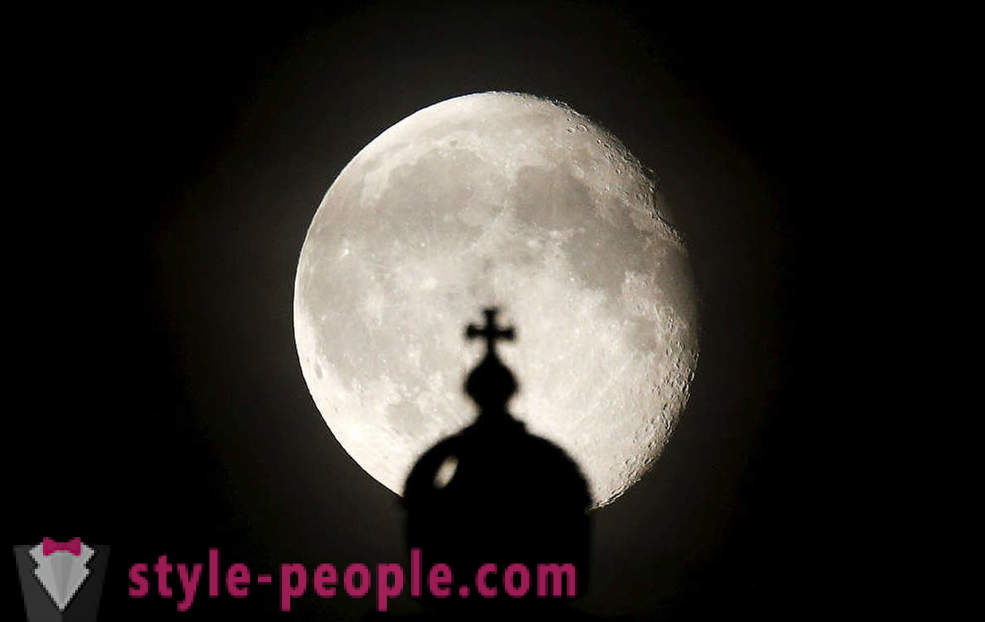
How to buy the moon? There are dubious companies involved in the sale of land on the moon. In exchange for a fee, the buyer receives a certificate of "ownership" on a certain area of the lunar surface. It is believed that at the moment of such certificates are not legally binding.
23. Supermoon in Prague. (Photo by David W. Cerny | Reuters):














































